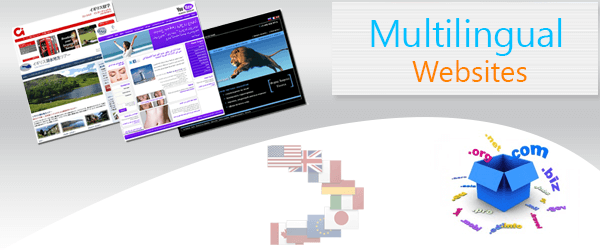
Last week AOL Advertising, the largest online ad network, released a study revealing that Spanish-language online ads are not only failing to connect with Hispanic audiences, but actually alienating them. These ads are typically translated from English to Spanish, segmenting the audiences only by the languages they speak with little regard for their life stages, interests, or other psychographic. No wonder they’re turned off.
This report begs us to examine the way we build foreign language websites and how we speak to our multi-cultural site visitors. At Faribault Web Design, we receive frequent inquiries from companies looking to expand their web presence into multiple languages. And as we operate in a global economy and a world that is so connected by the web, more and more organizations have to consider this every day.
Even if your company does not need a foreign language site today, it’s important to consider whether it may need one in a few years. That way you can build your website to accommodate future phases. Below, I’ve evaluated 3 approaches to building multi-lingual sites and outlined some ideas as to how we can do a better job catering to our website visitors in their native languages.
1. Translating Select Pages: Many global companies find that their audiences understand English, but are more comfortable being addressed in their native language. In this case, it may be possible to satisfy your website goals by creating a homepage and other select pages in foreign languages which link to English pages on the main site.
One of the benefits of this approach is that it’s less labor intensive than translating or rebuilding an entire website. Keeping certain pages in the language in which they were written will also allow you to retain more control over the message, avoiding the pitfall of translating without really targeting your audience. Since not all content is translated using this approach, this strategy typically works best for organizations whose audiences know English as a second (or third, fourth, etc.) language.
2. Cloning: A second option is to create a foreign language site, identical to your English site in design and layout, translate the content, and host the site on a separate URL. While it may be tempting to use a quick and free service like Google Translate, I don’t recommend taking this easy way out. If you don’t speak the foreign language yourself, hiring a person or organization to translate will ensure that cultural nuances are recognized and that your message doesn’t get distorted.
As revealed in the AOL study, it’s important that the translation speaks to your users in terms of their life stages and interests, and not just their language. Supplying the translator with the strategy or creative briefs used to build the site will help them to understand your organization’s messaging and convey it to website visitors.
If your site requires frequent updates, managing multiple sites may be a challenge. On the other hand, if your foreign language sites will be managed by international offices and won’t necessarily require the same updates as your English site, this may be a good option.
3. A Multi-Lingual CMS: Often times the best way to approach creating a large-scale multi-lingual site is to build a portal of websites on a content management system, such as Sitecore, which supports foreign languages. A robust CMS will allow you to manage workflow and edit multiple sites in multiple languages using the same interface. This will be especially helpful if your organization’s websites are being edited from around the country or around the world.
It’s an important note, however, that a multi-lingual CMS will streamline, not automate, the management of your foreign language websites. It’s still essential to customize and personalize your message for the group your organization is speaking to, which will require dedicated resources.
Ultimately, what we can learn from AOL’s study is that we must be careful that our message is not lost in translation and that it is targeted to our visitors in ways that resonate. Deciding whether you need a foreign language site and which approach to take should be dependent on your company’s audiences, the intended uses of your site, the site’s size and global reach, and how frequent updates need to be made, among other factors. Consider this a starting point. Many considerations should be taken into account when creating multi-lingual sites and I realize I’ve only begun to scratch the surface. Feel free to share your thoughts, considerations, or questions on this topic here.